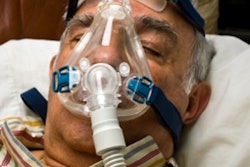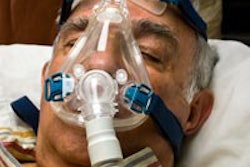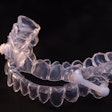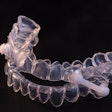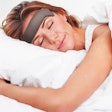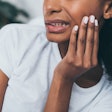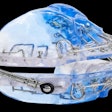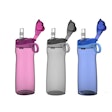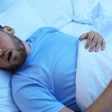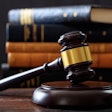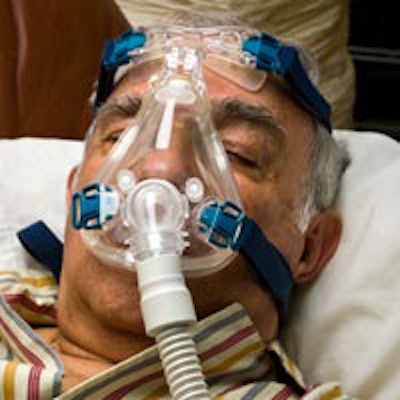
Dentistry has the unique opportunity to identify not only tooth-related problems but a myriad of systemic diseases as well. As dentists, we frequently see our patients more often than they see their primary care physicians. The dentist-patient relationship carries a large burden to discern our role in medicine not simply as "molar mechanics" but rather as oral physicians.
Dentistry originated as a specialty of medicine, but over generations this distinction has become blurred by the presence of dental insurance. As dental benefits have failed to keep pace with the cost of dentistry and the needs of our patients, we as dentists have the opportunity to redefine our role as physicians of the stomatognathic system.
The increased public awareness and evolving science regarding obstructive sleep apnea (OSA) offer dentistry the opportunity to bridge the gap between dentistry and medicine. This opportunity to treat this serious medical condition carries a large responsibility, as OSA represents a serious and potentially life-threatening disorder that has been directly linked to the following:
- Systemic hypertension
- Atrial fibrillation
- Increased risk of stroke
- Cancer
- Acid reflux
- Diabetes
In addition to the obvious health effects to our patients, the annual health care costs of untreated OSA topples $34 billion annually in the U.S., according to a 2015 study in the World Journal of Otorhinolaryngology-Head and Neck Surgery (September 2015, Vol. 1:1, pp. 17-27).
Obstructive sleep apnea falls under a broader classification of disorders termed "sleep breathing disorders." These include primary snoring, upper airway resistance syndrome, obstructive sleep apnea, and central sleep apnea. The severity of apnea is classified by the Apnea/Hypopnea Index (AHI), which is determined by adding the number of obstructive apneas, the number of central apneas, the number of mixed apneas, and the number of hypopneas per night, then dividing by the number of hours of sleep.
The definition of each event is in the table below.
| Event | Definition |
| Apnea | Cessation of airflow for 10 seconds or longer |
| Hypopneas | Decreased airflow, not cessation, for 10 seconds or longer |
| Central apneas | Cessation of airflow for longer than 10 seconds with no chest or abdominal effort. |
| Mixed apnea | A combination of obstructive and mixed apnea events |
The severity of OSA, as determined by the AHI and diagnosed by a sleep physician, is critical for the appropriate therapy that will yield the most efficacious care for the patient. The classifications are in the table below.
| Classification | AHI |
| Normal | Less than 5 |
| Mild | 5 to 15 |
| Moderate | 15.1 to 30 |
| Severe | Greater than 30 |
Traditionally, continuous positive airway pressure (CPAP) has been the treatment of choice for all forms of apnea. Apnea is a disease of airway collapse, and CPAP functions as a pneumatic splint to maintain an airway while asleep. In fact, CPAP is the recommended therapy for treatment of central OSA and severe OSA, while oral sleep appliances are most effective in the treatment of mild and moderate OSA cases. For those patients who are deemed CPAP-intolerant, oral appliance therapy is recommended for severe apnea as well.
Hybrid therapy can be an option for severe apnea cases in which CPAP at a reduced pressure is used in conjunction with an oral appliance. Efficacy in the treatment of OSA is considered successful with an AHI reduction to less than 5% or a 50% reduction from the pretreatment AHI, based on an American Academy of Sleep Medicine and American Academy of Dental Sleep Medicine clinical practice guideline.
Diagnosis
The diagnosis of OSA can only be made by a qualified sleep physician. A dentist can only proceed with fabrication of an oral appliance with a prescription provided by a physician who has had a face-to-face evaluation with the patient. Providing treatment for OSA without a diagnosis and a physician's prescription is practicing outside the scope of dentistry. Dentists simply can't treat a medical condition without a diagnosis and a prescription to treat. The same can be said for snoring. Primary snoring is a medical diagnosis, and it can also be a symptom of apnea. Therefore, treating snoring with a snore guard without a sleep study is treating a medical condition without a diagnosis.
Now that you know the rules and already have the degree to treat sleep breathing disorders as dentists, the next step is to get the proper training and education. It is critical to understand that placing a device into someone's mouth requires a thorough investigation of the temporomandibular joint. Simply placing a device at a said vertical dimension can actually exacerbate an underlying jaw problem that will, in turn, affect the patient's sleep that we are trying to help.
In part two of this series, I will outline the intraoral findings that dentists can use to identify suspected sleep breathing disorder in their patients.
Michael Giesy DDS, practices at the TMJ & Sleep Therapy Centre of Washington and also owns a private practice in Tacoma, WA. He can be reached at [email protected].
The comments and observations expressed herein do not necessarily reflect the opinions of DrBicuspid.com, nor should they be construed as an endorsement or admonishment of any particular idea, vendor, or organization.




